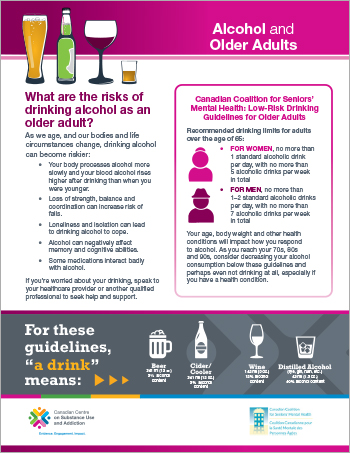Increased Alcohol Use In Women: A Public Health Issue

Table of Contents
Rising Trends and Contributing Factors
The upward trend in increased alcohol use in women is a complex issue with multifaceted contributing factors. Understanding these factors is crucial in developing effective prevention and intervention strategies.
Sociocultural Influences
Societal pressures, clever marketing techniques, and evolving gender roles significantly contribute to increased alcohol consumption in women.
- Societal Pressures: Women today face immense pressure to balance demanding careers, family responsibilities, and societal expectations of physical appearance. Alcohol is often used as a coping mechanism to manage stress, anxiety, and feelings of inadequacy. Body image issues, fueled by unrealistic media portrayals, can also lead to increased alcohol use as a means of self-medication or social acceptance.
- Targeted Marketing: Alcohol advertising often utilizes imagery and messaging that appeals specifically to women, subtly associating alcohol consumption with empowerment, relaxation, and social connection. This targeted marketing significantly impacts drinking behavior.
- Changing Gender Roles: The increasing participation of women in the workforce and their greater independence have, in some cases, led to increased opportunities for alcohol consumption in social settings. This shift in social dynamics contributes to a normalization of drinking among women.
Mental Health and Alcohol Use
A strong correlation exists between mental health conditions and alcohol misuse in women. Many women self-medicate to cope with anxiety, depression, or trauma.
- Co-occurring Disorders: Statistics reveal a high prevalence of co-occurring disorders, such as anxiety disorders, depression, and post-traumatic stress disorder (PTSD), among women with alcohol use disorder. This highlights the need for integrated treatment approaches that address both mental health and substance use issues.
- Self-Medication: Alcohol can provide temporary relief from symptoms of mental illness, creating a vicious cycle of dependence and worsening mental health. This self-medication approach delays appropriate treatment and exacerbates the problem.
- Access to Care: Limited access to affordable and effective mental healthcare further complicates the issue. Many women face barriers to seeking help, including stigma, lack of insurance, and difficulty finding appropriate services.
Accessibility and Affordability
The ease of access to alcohol and its affordability contribute to the problem of increased alcohol use in women.
- Increased Availability: Alcohol is readily available in various settings, from supermarkets and convenience stores to bars and restaurants. This widespread availability makes it easier for women to consume alcohol, regardless of their intention.
- Pricing Strategies: Aggressive pricing strategies, including happy hour specials and bulk discounts, further encourage increased alcohol consumption.
- Lack of Regulation: In some areas, lax regulations regarding alcohol sales and advertising contribute to increased accessibility and normalize excessive drinking.
Health Consequences of Increased Alcohol Consumption in Women
Excessive alcohol use has significant and often devastating consequences for women's physical and mental health.
Physical Health Risks
Women experience unique physical health risks associated with excessive alcohol use.
- Increased Cancer Risk: Alcohol consumption significantly increases the risk of several cancers, including breast, liver, and colorectal cancers.
- Liver Disease: Excessive alcohol intake can lead to various liver diseases, including alcoholic hepatitis and cirrhosis.
- Cardiovascular Problems: Alcohol abuse contributes to cardiovascular problems, including high blood pressure and heart disease.
- Weakened Immune System: Chronic alcohol consumption weakens the immune system, making women more susceptible to infections and illnesses.
- Fertility Issues: Excessive alcohol use can negatively impact fertility, increasing the risk of menstrual irregularities, miscarriage, and infertility.
Mental Health Impacts
The mental health consequences of increased alcohol use in women are equally serious.
- Increased Risk of Depression and Anxiety: Alcohol use can worsen existing mental health conditions like depression and anxiety and increase the risk of developing new ones.
- Suicidal Thoughts: Excessive alcohol consumption is linked to increased suicidal ideation and attempts.
- Cognitive Impairment: Chronic alcohol abuse can lead to cognitive impairment, impacting memory, concentration, and overall cognitive function.
Addressing the Issue: Prevention and Intervention Strategies
Addressing the issue of increased alcohol use in women requires a comprehensive, multi-pronged approach.
Public Health Campaigns
Targeted public awareness campaigns are crucial in educating women about the risks of excessive alcohol consumption.
- Effective Campaigns: Successful campaigns utilize relatable messaging, focus on specific age groups, and leverage various media channels, including social media and traditional advertising.
- Future Campaign Strategies: Future campaigns should focus on empowering women to make informed choices regarding alcohol consumption, providing accessible resources and support.
Early Intervention and Treatment
Early detection and access to effective treatment programs are essential for women struggling with alcohol use disorder (AUD).
- Treatment Options: Treatment options include various therapies (cognitive-behavioral therapy, motivational interviewing), medication, and support groups like Alcoholics Anonymous (AA).
- Addressing Co-occurring Disorders: Integrated treatment approaches are crucial for addressing co-occurring mental health disorders.
Policy Changes
Policy changes can play a significant role in reducing alcohol misuse among women.
- Regulation of Alcohol Advertising: Stricter regulations on alcohol advertising, particularly those targeting women, can help reduce the normalization of excessive alcohol consumption.
- Stricter Alcohol Control Policies: Implementing stricter alcohol control policies, such as raising the drinking age or limiting alcohol availability, can help reduce overall alcohol consumption.
- Increased Funding: Increased funding for prevention and treatment programs is crucial in providing accessible resources and support to women struggling with alcohol use.
Conclusion
The increased alcohol use in women is a significant public health concern with far-reaching consequences for women's health, families, and society. Addressing this issue requires a multifaceted approach that combines public awareness campaigns, readily accessible and effective treatment options, and supportive policy changes. Ignoring this growing problem will only lead to further devastating impacts. Let's work together to raise awareness, support those affected, and advocate for policies that protect women's health. Learn more about resources available to combat increased alcohol use in women today.

Featured Posts
-
 Analyzing The San Jose Earthquakes A Detailed Scouting Report For Opponents
May 16, 2025
Analyzing The San Jose Earthquakes A Detailed Scouting Report For Opponents
May 16, 2025 -
 Andor Season Finale Cast Interviews And Behind The Scenes Footage
May 16, 2025
Andor Season Finale Cast Interviews And Behind The Scenes Footage
May 16, 2025 -
 Analyzing The Reign And Ruin Of The King Of Davos
May 16, 2025
Analyzing The Reign And Ruin Of The King Of Davos
May 16, 2025 -
 Hondas Ontario Ev Investment On Hold Impact Of Market Slowdown
May 16, 2025
Hondas Ontario Ev Investment On Hold Impact Of Market Slowdown
May 16, 2025 -
 Padres Begin Extended Road Trip With Games In Pittsburgh
May 16, 2025
Padres Begin Extended Road Trip With Games In Pittsburgh
May 16, 2025
